Eruca vesicaria
What is not to love about arugula?
This peppery leafy plant is my all-time favorite salad green, and luckily for me it is a cinch to grow!
Referred to by many names including rocket, rucola, roquette, rucoli, and rugula, arugula is an incredibly fast-growing cool season crop that adds a fresh spicy kick to salads and sandwiches. It is commonly found component of mesclun salad mixes.
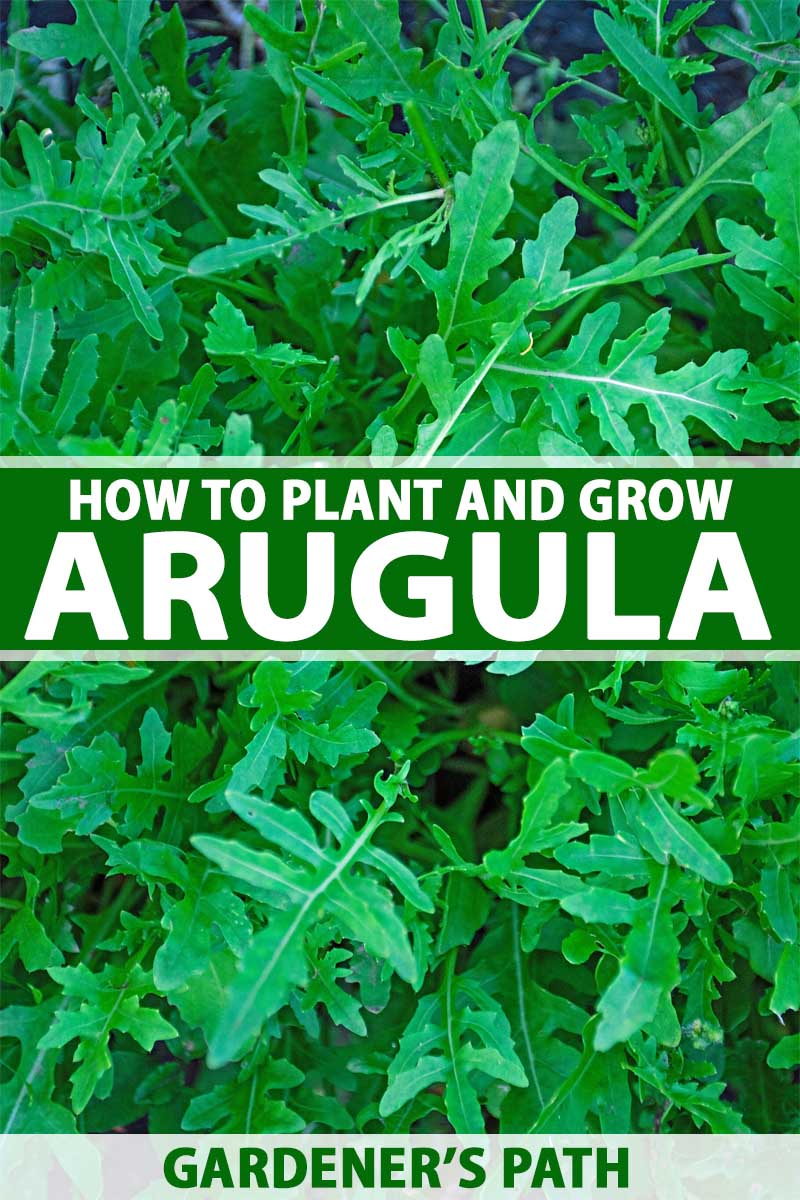
We link to vendors to help you find relevant products. If you buy from one of our links, we may earn a commission.
Best of all, growing it has an almost instant payoff since young leaves can be harvested only a few weeks after sowing seeds.
What You’ll Learn
Cultivation and History
Though fluctuating in popularity over the centuries, arugula has been a part of the human diet for a very long time.
It is mentioned in the Old Testament, so it may have been in human cultivation as early as the 6th century BC.
The plant is native to the Mediterranean and has long been enjoyed around the region in Italy, Morocco, Turkey, and Portugal.
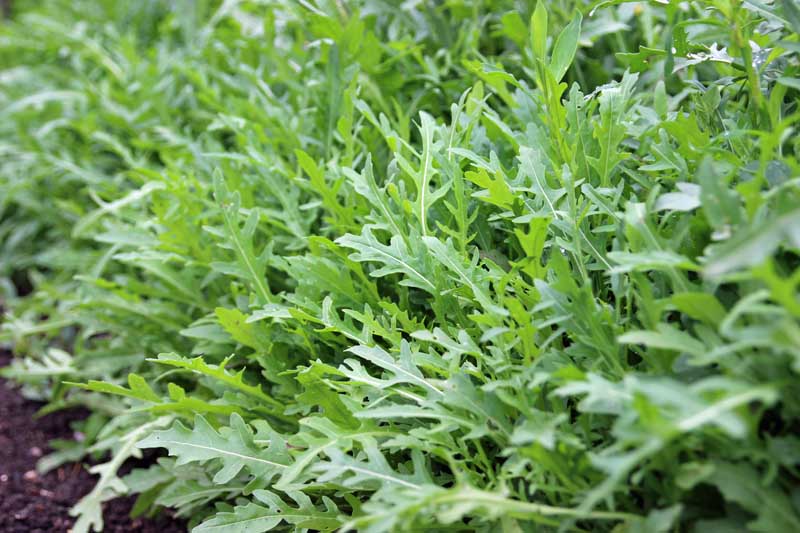
In ancient times its leaves and seed oil were considered an aphrodisiac by the Egyptians and Romans, and is still used medicinally in India, Pakistan, and West Asia.
Oil pressed from the seeds, known as Taramina oil, is often used to promote hair growth, reduce dandruff, kill lice, and reduce inflammation of skin conditions.
In the United States, this piquant garden staple is finally receiving its time in the spotlight!
Though originally brought to North America by British colonists, it really wasn’t until the last 20 years or so that it has gone from a relatively rare ingredient to modern culinary sensation.
How to Sow Arugula
Arugula can be easily sown from seed and you can begin planting as soon as the soil thaws in spring.
Find a spot in full sun or partial shade, and sow seeds 1/4-inch-deep in rows 10 inches apart, leaving about an inch between each.
If you prefer, you can also broadcast seeds and thin later. Seeds should germinate within just a few days!
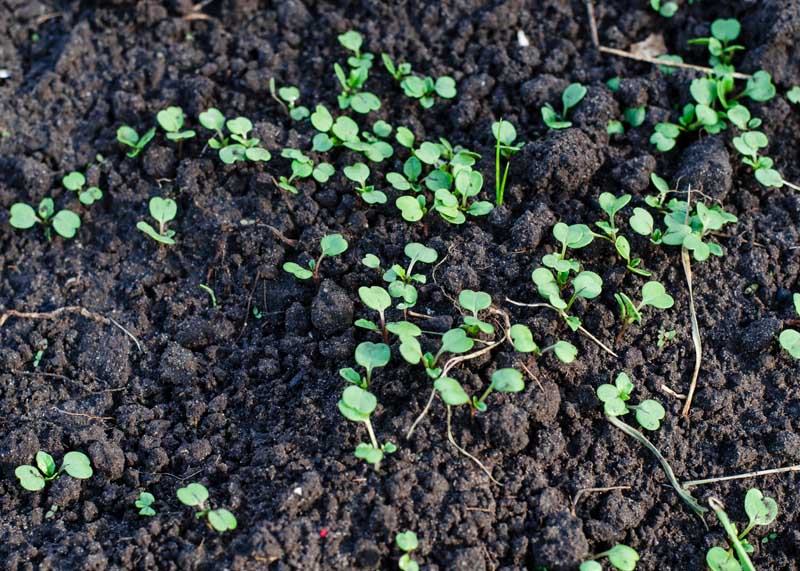
Try mixing with other salad greens when broadcasting to create your own mesclun mix!
Sow in spring and again in late summer for a fall harvest, or better yet seed every two to three weeks throughout the season for a continual harvest.
There is really not much to growing and maintaining arugula. It grows so fast that when issues do arise, you can always just reseed and wait a couple of weeks.
Arugula prefers nutrient rich soil but is tolerant of a wide variety of growing conditions. In truth, it can be grown just about anywhere.
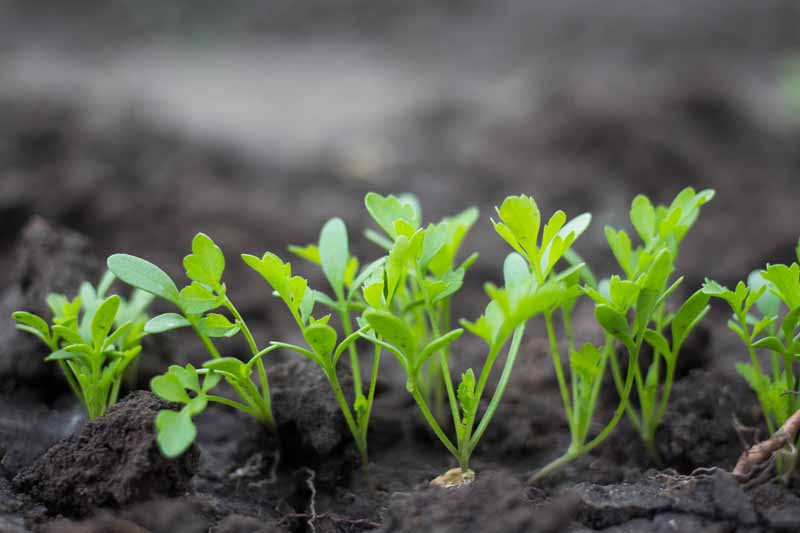
Once your bed is seeded, just be sure to keep the soil moist until sprouts appear. When plants have developed a few true leaves, you can thin to about six inches apart.
Don’t toss out thinned plants! Use those baby arugula greens in salads or as a peppery garnish.
If growing in the heat of summer, plant in part shade or use a shade cloth to reduce stress and delay bolting.
It is also important to keep plants well-watered. Arugula has a shallow root system, so it needs consistent and frequent watering, or it will dry out.
Water the base of plants instead of the leaves to reduce chances of mildew and blight.
Arugula Growing Tips
Don’t forget to thin plants as they are growing to avoid overcrowding and reduce risk of disease.
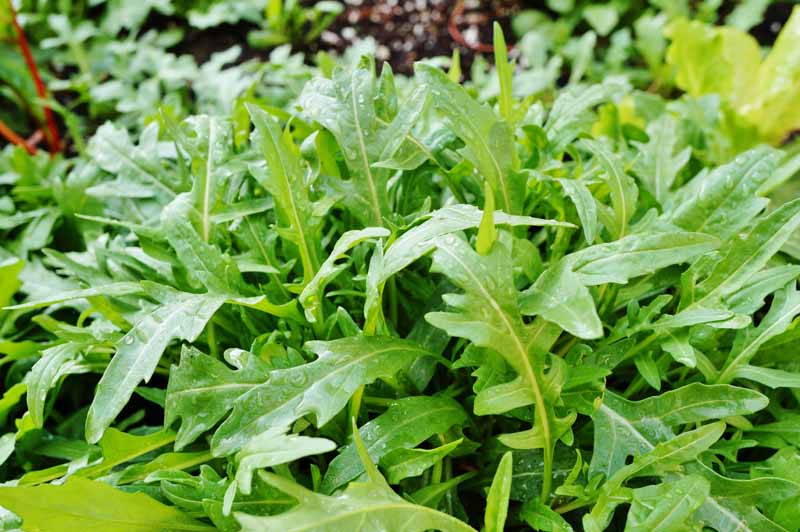
Pick leaves in the evening to avoid wilting in the hot sun.
Arugula is a great companion plant! Because it has shallow roots and doesn’t take up much space, it can be seeded around many slower growing crops to fill in the gaps.
This can also be handy in the heat of summer, because larger crops will provide some shady relief to this cool weather lover.
If growing in summer, you may also consider finding heat resistant strains.
Wild arugula, a close relative of the cultivated variety, is less bitter and more heat tolerant. It does grow a bit slower, maturing in about five weeks, so keep that in mind if timing seedings for a continual harvest.
Cultivars to Select
There are a number of different cultivated varieties available. These are a few of my favorites:
Rocket
Rocket arugula is a classic variety that you may have seen sold in supermarkets and restaurants.
It has beautifully serrated leaves, a crisp and peppery flavor, and is amazing in salads and sandwiches.
For best results, grow in the spring or fall; it loves cool weather.
Various sizes of seed packets are available from Eden Brothers.
Wall-Rocket (Wild Arugula)
This wild selection has a more refined, less bitter flavor and makes for a lovely garnish.
It’s also one of the few cultivars that perform well during warm weather and makes an excellent option for southern gardeners. It’s a tender perrennial in the right climate zones.
Pick leaves at two inches.
Seeds are available at True Leaf Market.
Red Streaked
‘Red Streaked’ is a colorful selection that brings a pop of color into an otherwise green pallet. The traditional oak-leaf shaped, toothed leaves are punctuated with maroon veins.
Luckily, it’s bite is not as bad as its bark as it’s one of the milder offerings.
‘Red Dragon’ does best in the cooler weather of fall and spring. Harvest the younger leaves at two to three inches and leave the center intact for the plant to regenerate.
Find the seeds at True Leaf Market.
Slow Bolt
‘Slow Bolt’ has wider, fuller leaves than most other cultivars with distinct peppery flavor that can be described as almost spicy.
As the name indicates, this offering doesn’t bolt (go to seed) nearly as fast as other varieties and makes it ideal for southern gardeners growing in hot climates.
It’s also a good choice for microgreens to add a little flavor to an otherwise bland salad.
True Leaf Market offers seed packets in various sizes.
Garden Tangy
Burpee has designated this cultivar as their “best in class” for both extraordinary flavor and heat tolerance. They imported this selection from Italy with its warmer, Mediterranean climate.
Growers love the large leaves that allow you to harvest earlier than usual. Perfect for those with smaller growing areas.
Managing Pests and Disease
There are a number of pests and diseases to be on the lookout for in your arugula patch.

The following are the most common pests that you’ll likely encounter:
Flea Beetles
These common garden pests can overwinter in soil and emerge to chew holes in young leaves, sometimes causing total destruction of plants.
You may or may not be able to spot these tiny beetles but keep an eye out for tiny round holes in leaves, especially in seedlings.
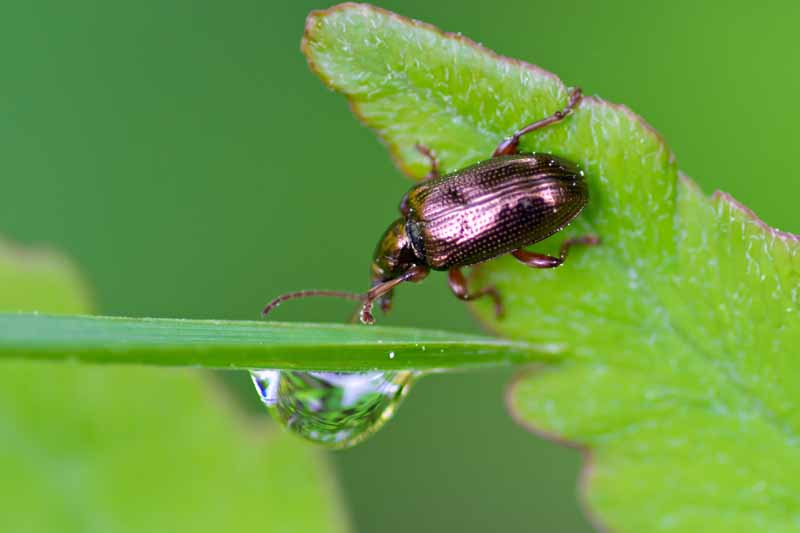
There are a few ways to control flea beetle populations, such as using floating row covers, companion planting with marigolds, or by sprinkling naturally occurring diatomaceous earth.
Read more about flea beetle control here.
Slugs
My garden often suffers from damage by these, dare I say; icky, creatures.
Slugs are slimy, grey or brown soft bodied mollusks that slither through your garden at night or after a rain, leaving a slimy trail in their wake.
They eat large holes in plants and can do quite a bit of damage.
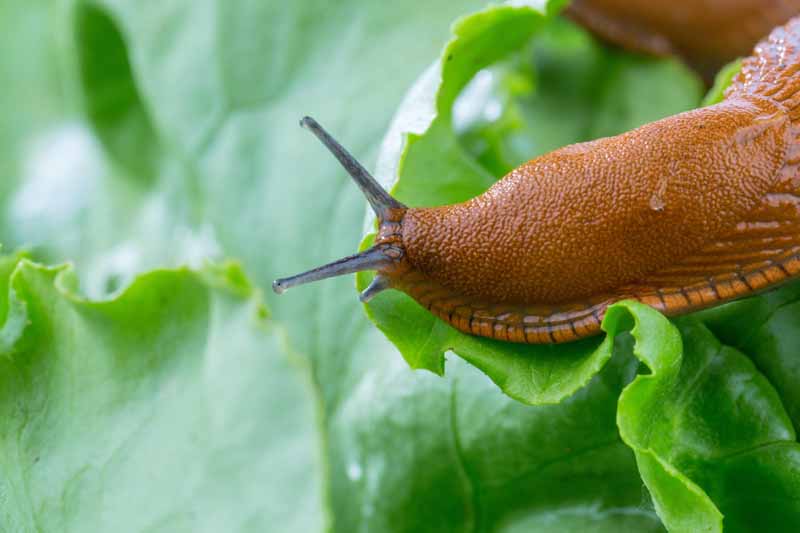
Hand pick in the evenings if you are brave enough or make “beer traps” by burying cups of beer.
The slugs will be attracted to the beer and fall into the cups, the cheaper the beer the better. You can also try sprinkling diatomaceous earth around the base of plants.
Read more about stopping slug damage here.
Cabbage Loopers
These little green caterpillars chew their way through leaves, growing larger and more damaging the longer they feed.
Handpick caterpillars or sprinkle plants with diatomaceous earth. Floating row covers can also help keep moths from laying eggs on plants.
Find out more about fighting cabbage loopers here.
Birds
Birds also enjoy this pungent snack just like this. If birds become an issue, row covers or netting can be an effective deterrent.
Disease
Fungi and bacterium love veggies and these two arre fairly prevalent in attacking leafy greens:
Downy Mildew
Look for brown spots or flecks on the tops and bottoms of leaves and mold growing underneath.
Remove infected plants, water the base of plants instead of the foliage, and thin to avoid overcrowding.
Leaf blight
Yellowing leaves or small wet brown spots on foliage can be a sign of this bacterial infection.
Remove affected plants at the first sign of infection and rotate crops. Watering the base of plants instead of the leaves can reduce the likelihood of blight.
Harvesting Arugula
You can begin harvesting young leaves when plants are just a couple of weeks old. In my opinion, younger leaves are the best tasting, tender and spicy but not too pungent.
Arugula tends to flower and bolt quickly, especially in heat, and once this happens leaves can quickly become overwhelmingly bitter.
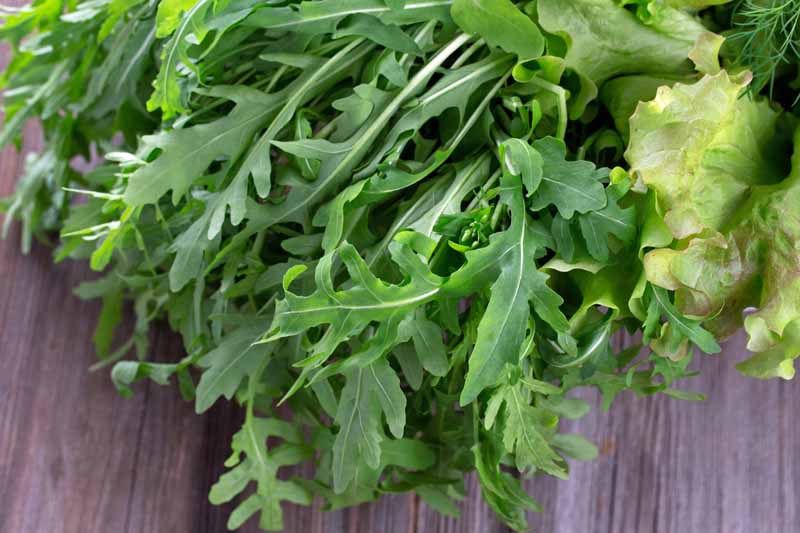
To harvest, pluck or cut individual leaves, picking a few from each plant.
Leave about two thirds of each plant intact. You can also pull up a whole plant at once, which I often do if plants start becoming overcrowded or are showing signs of bolting.
Pick younger leaves for a milder flavor and older for a stronger, sharper taste.
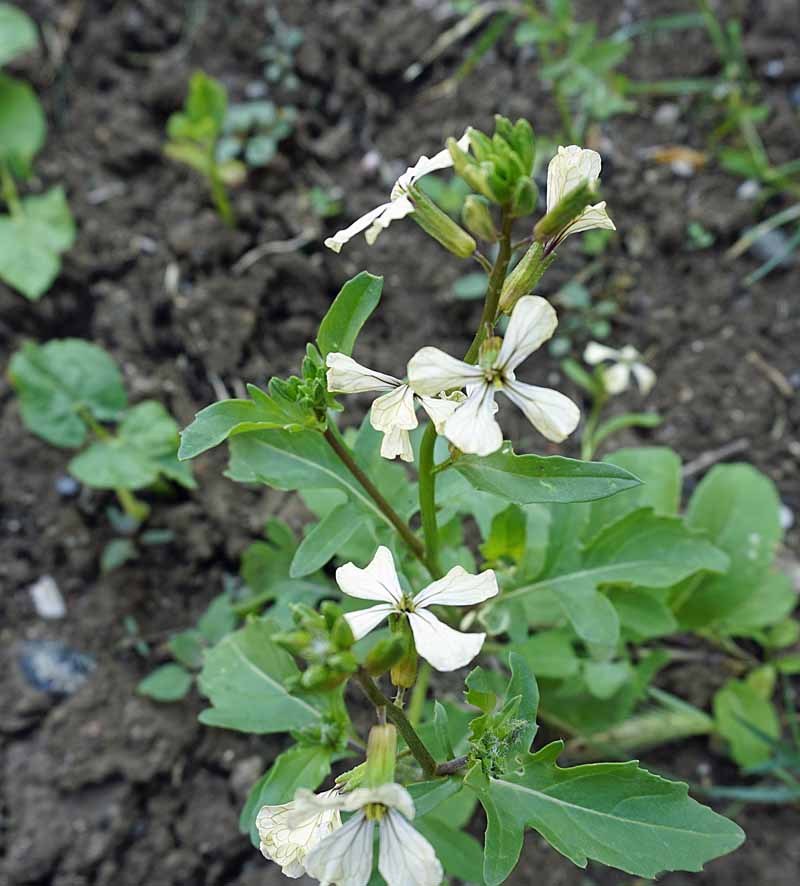
The small white flowers are also edible. They have a sharp spicy flavor, similar to the greens, and make a lovely garnish.
Read our complete guide on arugula harvesting for more tips.
Preserving
Fresh greens can keep for up to 10 days in the refrigerator. Store leaves wrapped in cloth or paper towel in a perforated plastic bag, and place in the crisper drawer.
You can also try freezing the greens in ice cube trays. Just wash, chop, place in trays, cover with olive oil and then freeze. Leave a little bit of headroom in each cube for expansion.
You can thaw and use cubes in sautés, soups, and egg scrambles during the winter.
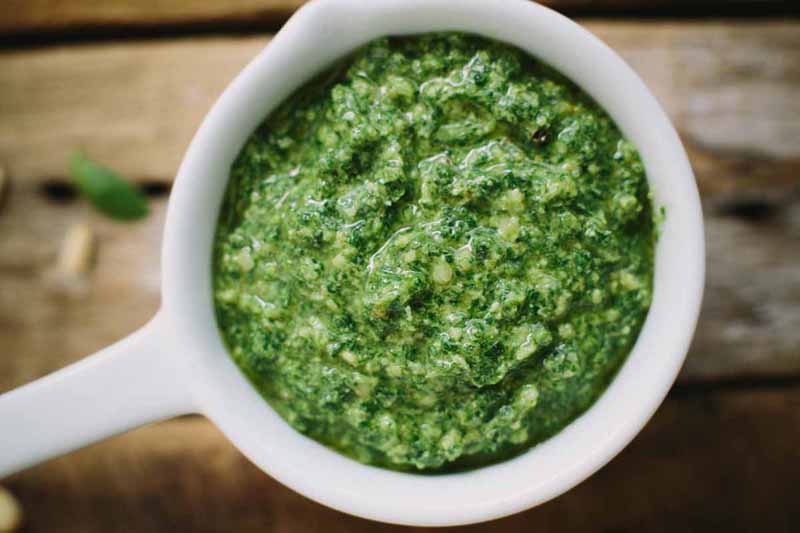
Or you can go with my favorite method way of preserving arugula and make a zesty arugula pesto (find the recipe on Foodal.com)!
Try mixing with young carrot tops for added flavor and sweetness.
Recipes and Cooking Ideas
Arugula is a perfect addition to any dish that could benefit from added freshness and a hint of spiciness.
Wonderful in salads and sandwiches, these flavorful greens are also amazing in stir fries, soups, and egg dishes such as quiche.
I love throwing liberal handfuls on top of homemade pizza just before it has finished cooking. The greens wilt slightly and add a delicious sharpness to the pie.
Arugula Dijon Salad with Figs, Pistachios, and Pea Shoots
This flavorful spring salad with arugula, pea shoots, figs, pistachios. will leave you feeling refreshed and ready for a day in the garden.

The dressing is a simple but tasty affair: it is just a blend of lemon juice, a dash of honey, Dijon mustard, olive oil, and a dash of sea salt.
Find the recipe on our sister site, Foodal.com.
Refreshing Summer Salad with Chocolate Balsamic Vinaigrette
This sounds like a funky combination, right? Chocolate on a veggie salad? But it’s surprisingly good.
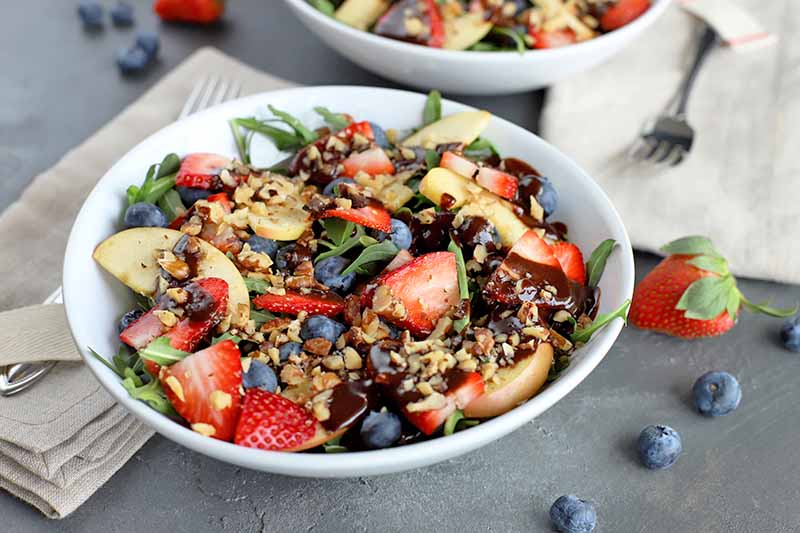
The base greens are made with arugula leaves to which are added sliced gala apples, chunks of fresh strawberries, blueberries, and thinly sliced toasted walnuts.
The chocolate balsamic dressing finishes it off creating a light salad that is the perfect combo of fruity, sweet, and savory flavors.
Get the details on Foodal now.
Potato and Chanterelle Soup with Fresh Arugula Pesto
This hearty vegan soup can be made in just 30-minutes. Chanterelle mushrooms and potatoes provide some heft and the arugula pesto added on top brings in a spicy, fresh flavoring.
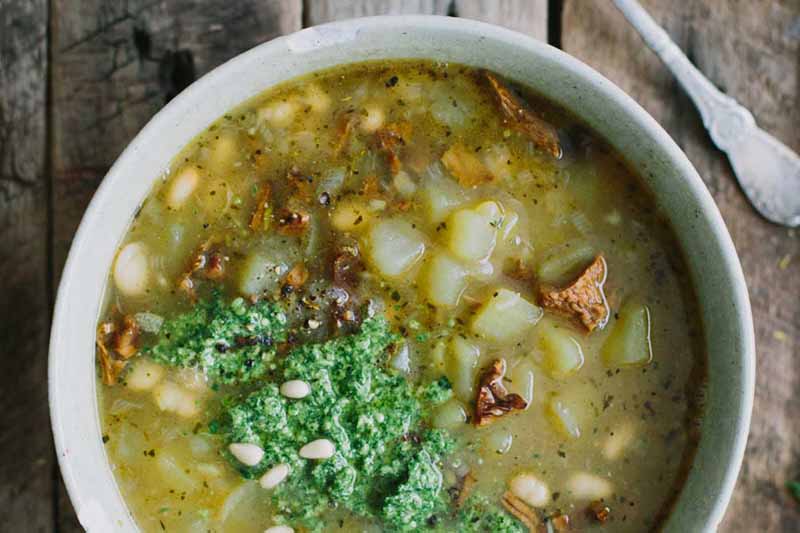
Vegans and carnivores will both love this tasty dish during the cooler months of fall and early spring.
Quick Reference Growing Chart
| Plant Type: | Self seeding annual | Tolerance: | Various soil types |
| Native to: | Mediterranean, naturalized worldwide | Growth Rate: | Fastest in cool weather |
| Hardiness (USDA Zone): | 3-11 | Maintenance: | Low |
| Season: | Spring and fall | Soil Type: | All |
| Exposure: | Full sun to part shade | Soil pH: | 6.0-7.0 |
| Time to Maturity: | 40 days | Soil Drainage: | Well-draining |
| Spacing: | 3-4 inches | Companion Planting: | Bush beans, carrots, onions, potatoes, spinach, other salad greens |
| Planting Depth: | 1/4 inch | Avoid Planting With: | Other plants in the Brassicaceae family to avoid sharing pests and diseases |
| Height: | 6-12 inches | Family: | Brassicaceae |
| Spread: | 12-18 inches | Genus: | Eruca |
| Water Needs: | Keep soil consistently moist | Species: | vesicaria |
| Common Pests: | Flea beetles, cabbage loopers, root nematodes, slugs, birds | Common Disease: | Downy mildew, leaf blight |
Grow Your Own Salad
Growing arugula is a no-brainer. All you really have to do is sprinkle some seeds, wait a few weeks, and voila, now you have a salad in your garden!
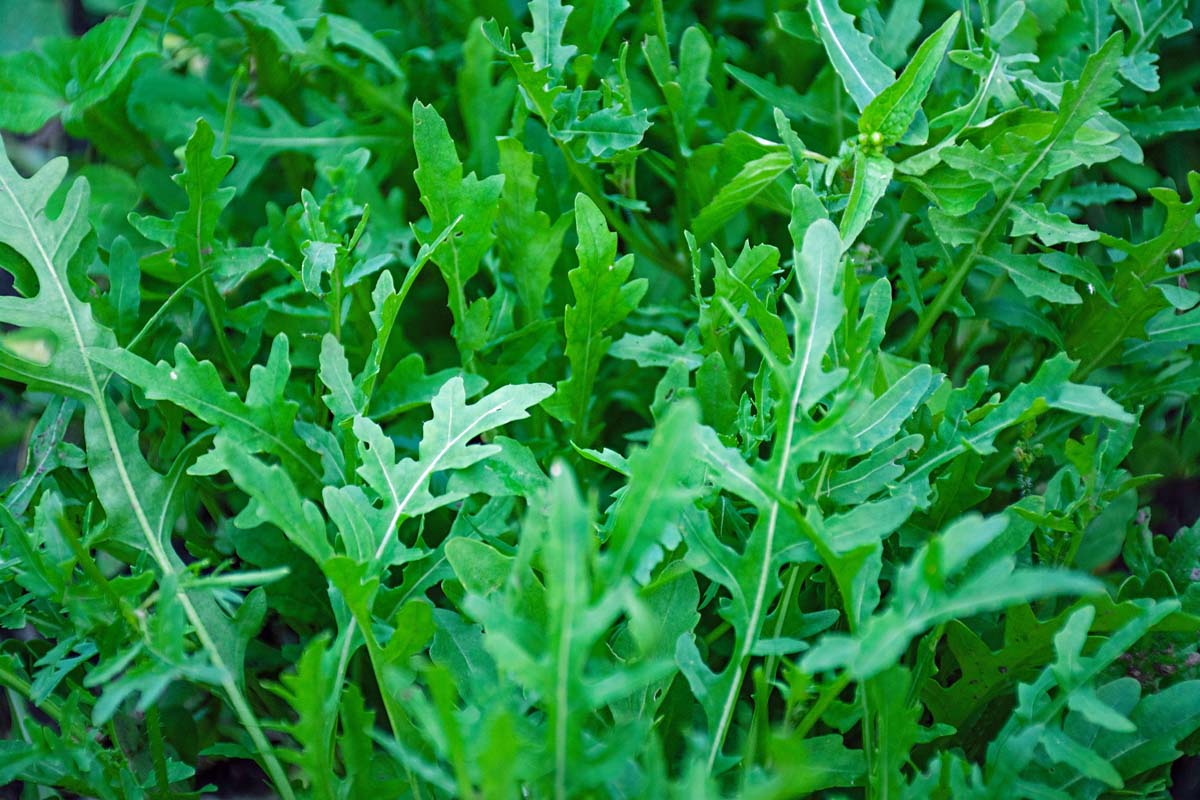
If you are anything like me, just scrolling down this page will make your mouth water for a big zesty bowl of fresh rocket. So if you will excuse me, I am off to the garden to pick out a few leaves!
What do you love most about arugula? Tell us your experience in the comments below.
And if you are looking for other cool weather crops, some of these growing guides may be of interest:
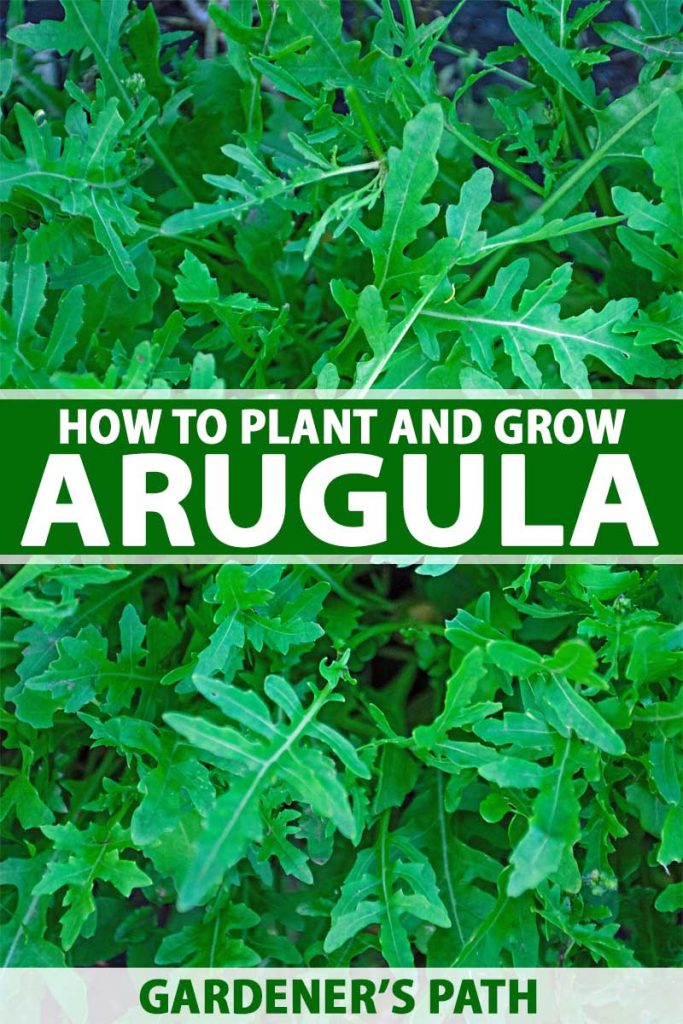


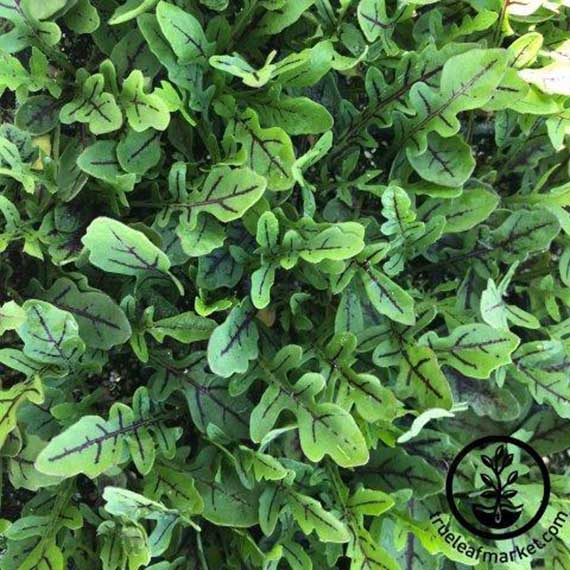
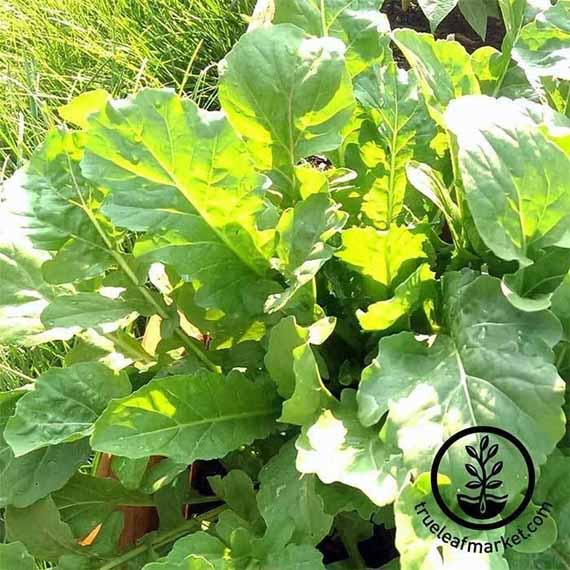
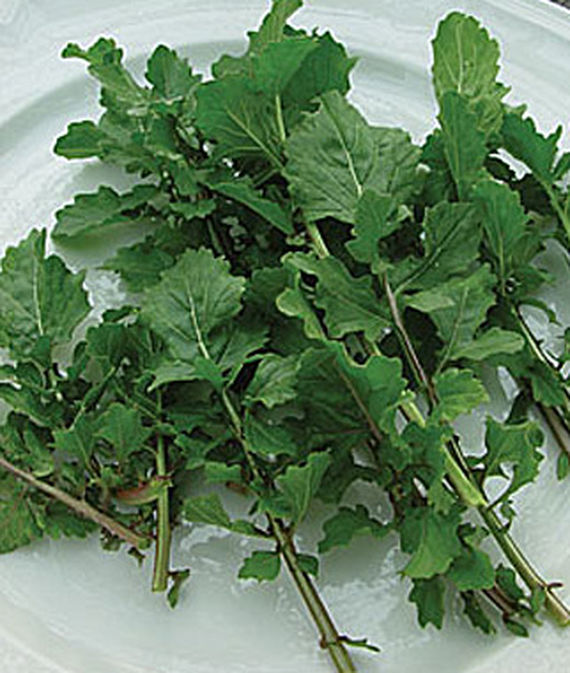
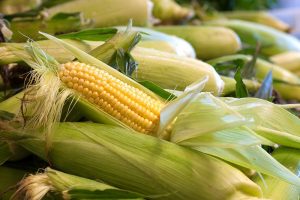
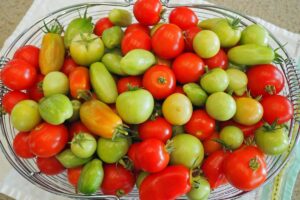
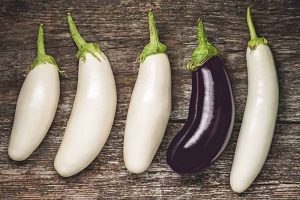
Great article and comprehensive – thank you. But one thing missing – can one harvest the seeds for future use, and how?
Yes you can save the seeds. Pick the stalks once the seed pods have formed and started to dry. Lay them in a cool dark place to finish drying. Once the seeds are too hard to dent with your fingernail, they are ready and you should easily be able to open the dry pods to remove the seeds. Seperate the seeds from the plant matter by hand or with a method such as screening and winnowing and store in a cool dry location until you are ready to use.
Arugula, also known as rocket or roquette, is a leafy green vegetable that belongs to the Brassicaceae family. It’s known for its distinctive peppery flavor and is often used in salads, sandwiches, and various culinary dishes.
Leaves are typically elongated and have a deep green color with serrated edges.